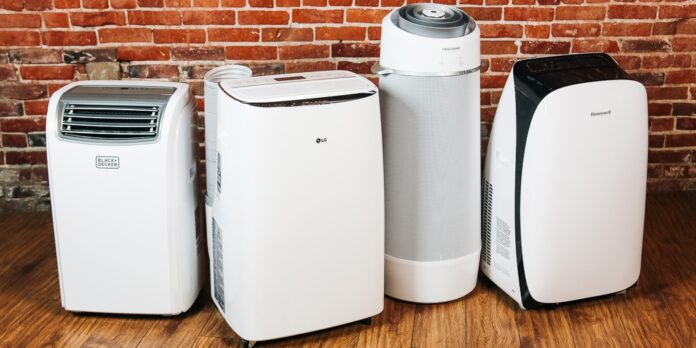Window unit air conditioners pump in cool air into the room while taking out warm air that is then distributed outside. The main unit of these window type air conditioners is placed outside, such that the main components and processes are irrelevant to the temperature of the room. This is in contrast to portable AC units wherein everything is in the room. Thus, while a portable AC can cool a room, it may take a while because of the heat emitted in the cooling process.
Nevertheless, a portable AC proves to have numerous advantages and one of these is that it is more inexpensive than a traditional window
AC, plus it is so much convenient to use. However, you need to make sure that you get one that is suited to your needs. In line with this, below are some of the things you need to consider.
Area Covered
The first thing that you need to think about when buying a portable AC is where you are going to use it. Think about whether you will use it in one of your bedrooms or you’d rather place it in your living room. This will give you a good idea of the size of the area that you want to cool down. The area covered by small air conditioners varies depending on their British Thermal Unit (BTU) rating. Generally, a portable AC with a higher BTU rating is capable of cooling down a larger area while a portable AC with a lower BTU rating can only cool down a limited space. Knowing the BTU rating of a portable AC, you have the option of getting one with a high rating to cool a large space, or get two or more portable AC with a lower BTU rating to be used in the same space.
Placement
Another thing that you need to think about when getting a portable AC is where you will specifically place it in a room. Generally, you need to position a portable AC near a window to be able to expel the warm air outside using the window kit that usually comes with it.
This may prove to be a problem if you intend to cool down space without windows because you need to consider how you will be able to release the warm air outside.
Maintenance
Maintaining a portable AC is relatively easy because all you need to do from time to time is to drain any moisture it collects, which is part of the cooling process. However, there are portable AC units that feature a self-evaporative design. With these units, you will no longer need to think about manual draining. All that is left for you to do is to clean the filters and defrost the unit once you see a presence of ice building up in the coils.
Noise Level
Portable AC units produce a certain amount of noise as they work hard in cooling down your space. The noise they generate is often indicated by their decibel (dB) level. The lower the dB level of a unit, the less noise it makes as it cools a room. The quietest portable AC units have a dB level of 45 while standard ones come with a dB level of anywhere from 50 to 59. The former is best for your bedroom or a nursery and the latter is good enough for your child’s playroom.
Multi-functional Features
In buying a portable AC, you also need to consider whether the unit has other features such as a dehumidifying function of a fan-only mode.
The former will remove the moisture in the air and you can use the latter if the normal temperature is not too warm. Multi-functional features are a great addition to your AC unit, but the more features a unit has, the more expensive it tends to get.
Exhaust Hose Options
Portable AC units can come with a single hose or a dual hose exhaust option. Single hose units pull the air from the room and excrete the warm air and moisture outside using the same pipe. This entails the need for the AC unit to work harder on cooling down the room, but this is already sufficient for small spaces. Conversely, dual hose units have one hose dedicated to pulling air out of the room and another hose intended to solely expel the warm air outside. This is more efficient to cool down bigger spaces or rooms.
Energy Efficiency
You also need to check the energy efficiency of the portable AC unit you are considering. It is usually indicated by the Energy Efficiency Ratio (EER) specification. Generally, units with a higher EER spec are more energy efficient. This means that they can produce a higher BTU per each watt of power used.
Budget
Finally, think about your budget range because there are portable AC units that are worth a couple of hundred dollars, while there are also units that can cost you over a thousand bucks. You tend to pay more for larger AC units because of their capability to cool down a larger space. You may also pay more for AC units with more functional features such as a dehumidifying function. It can also be that you pay a bit more for a unit that is quieter, more energy-efficient or one with a dual hose exhaust option.
Think about where you will use your portable AC to ensure that you get a unit that will cover the area of the room where you will place it.
Also consider the maintenance needs of the unit, as well as its noise level or other functional features. It will also help to have a good insight into the exhaust hose options, as well as on the energy efficiency of the AC unit. But overall, it all boils down to the budget that you are willing to spend for a portable AC. The key is in balancing the features that you want with the size and price of the unit that you intend to get.





















